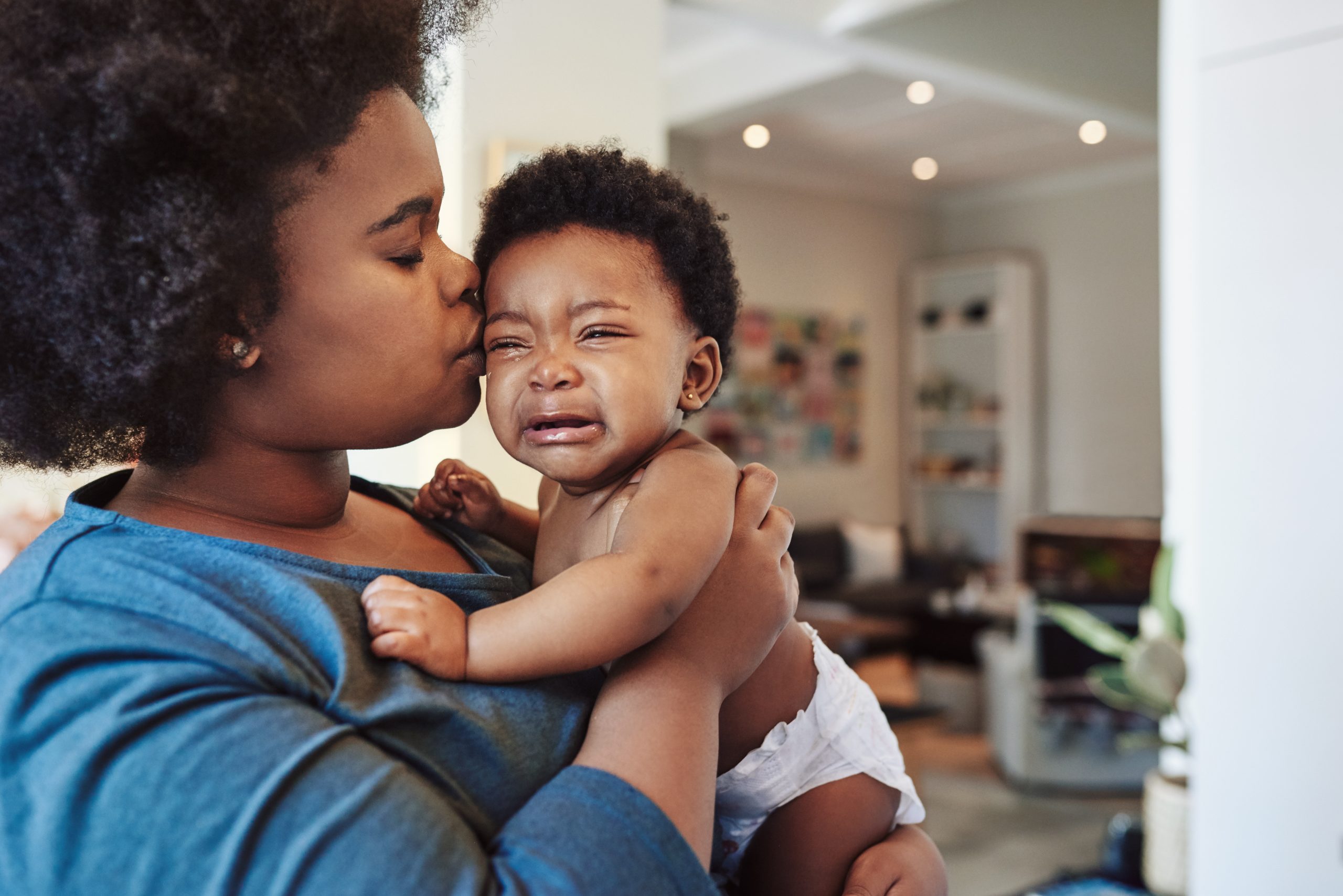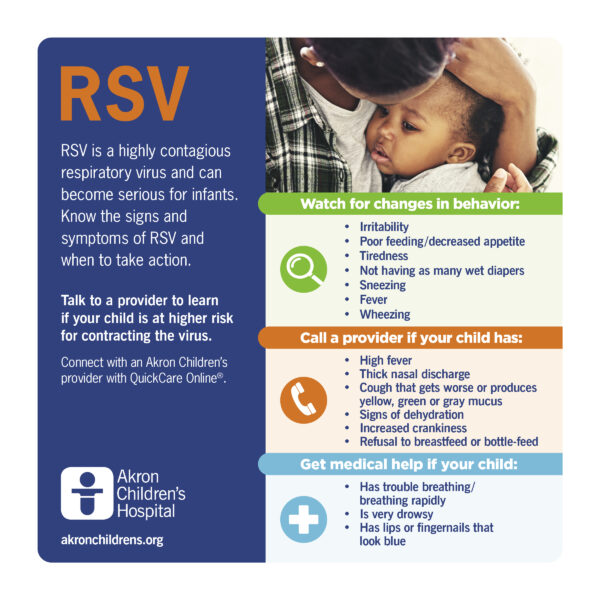
RSV is the leading cause of hospitalization among infants in the United States. Know the signs of RSV and ask your healthcare provider if your child is at a higher risk for contracting the virus.
RSV cases continue to run rampant in our communities and many parts of the country. The common virus causes mild cold-like symptoms with thick mucus and a lingering cough in adults and older children, but it can be very dangerous for young children. In fact, RSV, or respiratory syncytial virus, is responsible for nearly 80,000 hospitalizations and up to 300 deaths among children younger than 5 years of age each year, according to the U.S. Centers for Disease Control and Prevention.
It’s important for parents to know the signs and symptoms, how to treat RSV at home and when to act fast and seek medical attention.
“In some younger children, RSV can cause more significant cold symptoms like fever, breathing difficulties or severe cough, and children less than 1 year of age have the greatest risk for severe symptoms with RSV,” said Michael Bigham, MD, a pediatric intensivist and Akron Children’s Chief Quality Officer in Critical Care Medicine. “For kids with underlying conditions, such as preterm babies and those with chronic health conditions that affect the lungs, heart or immune system, RSV can quickly lead to hospitalization.”
Common RSV symptoms include:
- A stuffy or runny nose
- Sore throat
- Cough
- Sneezing
- Fever
- Decrease in appetite
- A general ill feeling
Dr. Bigham notes that changes in infant behavior are just as important to notice as the cold-like symptoms the virus produces. In infants younger than 6 months, symptoms may include irritability, poor feeding, tiredness and not having as many wet diapers. In older infants and young children, decreased appetite may appear 1 to 3 days before a cough, often followed by sneezing, fever and sometimes wheezing.
RSV can lead to complications, such as pneumonia or bronchiolitis, especially in young babies and kids with underlying conditions.
RSV is highly contagious – passed via airborne droplets from person to person or on surfaces – and can spread quickly. Since RSV is a viral infection, not bacterial, antibiotics aren’t used to treat it. The best defense is often rest, drinking plenty of fluids and seeking guidance from your child’s primary care provider.
How to treat RSV at home
For most kids, RSV can be safely managed at home by easing their discomfort.
- Use saline nose spray or drops (and a bulb syringe, if necessary) to help clear congestion, especially for kids too young to blow their noses.
- Use a cool mist humidifier in your child’s bedroom to help loosen congestion.
- Offer plenty of fluids to keep kids hydrated. For infants, breastmilk or formula are best. If kids don’t feel like drinking, offer fluids in small amounts often.
- If your child is over 1 year of age, try honey to relieve a cough.
- Reduce fever and discomfort with non-aspirin medicine, such as acetaminophen. If your child is older than 6 months, you can try ibuprofen. Do not give children over-the-counter aspirin or cough and cold medicines. They can be dangerous for young children.
When to seek medical attention for RSV
Call a provider if your child has:
- A high fever and doesn’t look well.
- Thick nasal discharge.
- A cough that gets worse or produces yellow, green or gray mucus.
- Signs of dehydration, such as fewer wet diapers than usual.
- Increased crankiness or refusal to breastfeed or bottle-feed.
Get medical help right away if your child:
- Has trouble breathing or is breathing very rapidly.
- Is very drowsy.
- Has lips or fingernails that look blue.

For health assessments, Akron Children’s offers virtual visits via Quick Care Online and onsite visits at dozens of pediatric primary care offices throughout northeast Ohio. For timely, in-person visits, Akron Children’s also has urgent care and emergency locations throughout the region. For guidelines on when to choose Quick, Urgent or Emergency Care, click here.










